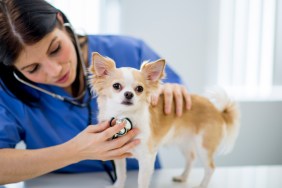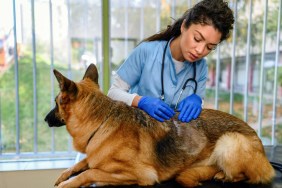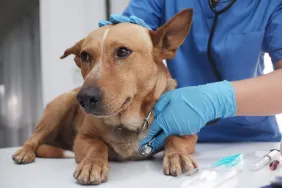Schnauzer Comedo Syndrome in Dogs: Symptoms, Causes, & Treatments

Schnauzer comedo syndrome in dogs is a medical condition that causes small bumps on the skin. Technically, it is also known as Schnauzer bumps.
The disorder is genetic and affects Schnauzers. For example, Miniature Schnauzers, Standard Schnauzers, and Giant Schnauzers can all be predisposed to the condition.
Thankfully, most dogs are not hugely affected by the problem. Additionally, special shampoos and topical applications can help to treat Schnauzer bumps.
If you see signs that your dog might be suffering from this condition, then you must consult your veterinarian for a proper diagnosis and course of treatment. Here’s what you should know about the symptoms, causes, and treatments of Schnauzer comedo syndrome in dogs.
@media (min-width: 0px) and (max-width: 749px) { .pb_prebidjs_300x250_a__wrapper { min-height: 250px; } } @media (min-width: 750px) { .pb_prebidjs_300x250_a__wrapper { display: none; } }
Symptoms of Schnauzer comedo syndrome in dogs
Schnauzer comedo syndrome in dogs can result in a range of symptoms. Generally, these symptoms look like small warts or pimples along the back. Often, they appear as black-centered bumps similar to “blackheads” in humans.
Moreover, symptoms of this condition may come and go. Your dog may experience future flare ups, even if the condition is properly diagnosed and treated.
Specifically, some of the most common symptoms include:
- Itchiness
- Skin getting thicker
- Crusty bumps on the skin
- Scaly skin lesions
- Loss of hair
- Bad smell
- Red patches
- Pus- or fluid-filled bumps, but not always
Causes of Schnauzer comedo syndrome in dogs

The cause of the condition is usually genetic, resulting from a defective gene affecting a dog’s hair follicles. This means a dog is born with it. In particular, Miniature Schnauzers, Standard Schnauzers, and Giant Schnauzers can all suffer from the problem.
Additionally, in some cases, a dog’s sebaceous glands can cause Schnauzer bumps. Specifically, the condition happens when the glands become blocked.
Moreover, dehydration may contribute to a Schnauzer developing scaly patches. Proper hydration can prevent an electrolyte imbalance, thereby reducing the likelihood of dry skin in your dog.
Treatments for Schnauzer comedo syndrome in dogs
Firstly, if you think that your dog might be developing Schnauzer comedo syndrome, your veterinarian will want to carry out a full physical examination of your canine. Oftentimes, a visual examination will be enough to allow a vet to make a proper diagnosis of Schnauzer comedo syndrome. Additionally, your vet will ask about your dog’s complete medical history. This will include any breed-specific problems.
Secondly, your vet will take blood and urine tests. This is to rule out other conditions. Next, your vet will ask about your pup’s lifestyle. For instance, dietary issues and even beds dogs sleep in can both cause and further irritate the problem.
Finally, a skin scraping or biopsy can be taken. Subsequently, the results of this can confirm the condition.
There is no cure for this condition. Thankfully, however, a number of treatments are available for Schnauzer bumps. For example, antibiotics can help if your pet has a secondary infection from irritated skin lesions. As always, if your vet prescribes your pup any medication, stick to the precise dose and frequency instructions.
Additionally, topical treatments can used for Schnauzer comedo syndrome. For instance, anti-seborrheic shampoos and shampoos containing benzoyl peroxide can help with the problem. Milder shampoos are recommended in order to avoid further exacerbating symptoms. Also, antiseptic wipes and certain topical acne astringents may be recommended.
Finally, in some cases, dietary changes can help. Specifically, vitamin A supplements are often suggested to treat the condition. However, only add supplements to your canine’s diet under the guidance of your vet.




